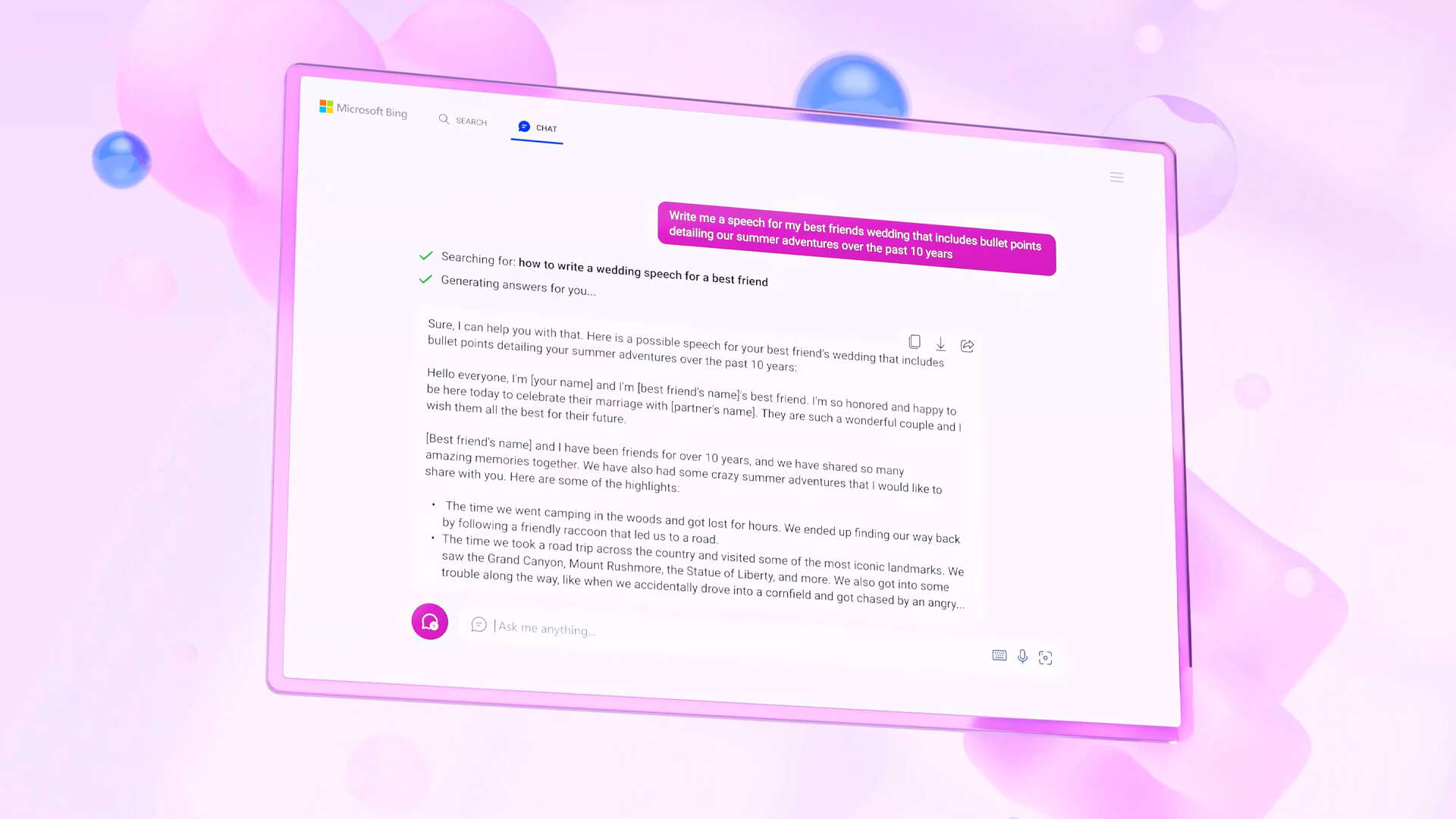
Microsoft has announced new additions to its AI-powered Bing search engine, which will now be able to deliver users visual outputs to their queries, as well as text. MSFT is banking on the AI additions, powered by the technology behind ChatGPT, to help Bing get a foothold in the search market, which is currently dominated by Google.

A new version of Bing was launched in February featuring a host of AI tools built on Prometheus, a modified version of OpenAI’s large language model, GPT-4, the technology that powers ChatGPT.
This has been in limited preview since then, and today’s announcement marks a move to what MSFT refers to as an “open preview”, which means anyone who registers can try out the service without having to join a waiting list.
What’s new in the latest Bing AI update?
The update will see Bing move from providing text responses to queries to what Microsoft describes as a “richer experience”. “More visual answers including charts and graphs and updated formatting of answers” will help users “find the information [they] seek more easily,” today’s announcement says.
Microsoft says it is working on providing multi-modal support in Bing, which will allow users to input an image and search for related information. However, this is not yet available and the company has not provided a timeline for when it might appear.
Elsewhere, Microsoft is making search query history available on Bing, rather than confining users to a single chat session, and says it plans to introduce plug-ins which will allow developers to tap into the system’s capabilities and integrate it with their own products via APIs. OpenAI added plug-ins to ChatGPT in March, which enables the chatbot to access platforms like restaurant booking service OpenTable.
Yusuf Mehdi, corporate vice president, and consumer chief marketing officer at Microsoft, said the company is aiming to “reinvent the future of search” with what it refers to as “Copilot for web”. He says the changes to Bing and the introduction of AI are “fundamentally changing the way people find information”.
Can AI help Bing to beat Google in the search market?
As an early backer of OpenAI, Microsoft has been reaping the rewards of the success of ChatGPT, and invested a reported $10bn in the company in January. As a result of the partnership, OpenAI’s models have underpinned AI-powered changes to Microsoft’s portfolio under the Copilot brand.
This includes Copilot for Work, which integrates AI into the company’s Teams messaging platform, Office 365 productivity suite and Dynamics 365 CRM system.
When it comes to search, Bing has stolen a march on market leader Google when it comes to AI, but still has a long way to go if it is to claim a significant share of the market. While Mehdi trumpets the fact that Bing now has 100 million daily active users, this is still a drop in the ocean compared to the one billion people who run queries through Google every day.
Google is making moves of its own when it comes to AI, having launched its own chatbot Bard, a ChatGPT competitor, in February. Built on the company’s PaLM large language AI model, Bard is likely to form the basis of an AI-based search engine for Google, with the New York Times reporting last month that such a system is in development. However, it apparently has no clear timeline for release.






